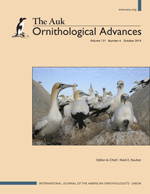Sperm competition, whereby sperm from multiple males compete to fertilize an egg, selects for adaptations that increase fertilization success. Because fertilization success is related to sperm number, size, and quality, both interspecific and intraspecific variation in these traits are predicted to correlate with the level of sperm competition. Specifically, species and individuals that experience high sperm competition are predicted to produce more sperm per ejaculate, produce longer sperm, and exert higher quality control, resulting in reduced numbers of morphologically abnormal sperm and reduced size variation via selection for the most successful sperm phenotype. However, the causes of sperm morphological and size variation and its consequences for sperm competition remain poorly understood, especially within species. We quantified variation in sperm morphology, size, and number in the Lance-tailed Manakin (Chiroxiphia lanceolata), a Neotropical suboscine passerine with a cooperative lek mating system. Although alpha-status males sire almost all chicks, the numbers of sperm produced per ejaculate by betas, nonterritorial adults, and subadult males were similar to those produced by alphas. Sperm counts declined with age in alphas, which may explain the decreased siring success of older alphas. Most ejaculates contained both normal helical sperm and abnormal sperm with rounded heads. The proportion of morphologically normal sperm per ejaculate was unrelated to social status or age. The coefficients of variation in sperm component length (head, tail, and total) both between and within alpha males were comparable to variation reported in passerines with low sperm competition. Total sperm length was shorter than in the majority of avian species studied to date, and cloacal protuberance and relative testis size were small. These results indicate low sperm competition, despite evidence for multiple paternity, or that sperm number rather than sperm morphology may be a major postcopulatory mediator of male reproductive success in this species. This work represents the first thorough quantification of intraspecific sperm variability in a suboscine passerine.
How to translate text using browser tools
3 September 2014
Small and variable sperm sizes suggest low sperm competition despite multiple paternity in a lekking suboscine bird
Rebecca J. Sardell,
Emily H. DuVal
ACCESS THE FULL ARTICLE

The Auk
Vol. 131 • No. 4
October 2014
Vol. 131 • No. 4
October 2014
Chiroxiphia lanceolata
lek
manakin
multiple paternity
sperm competition
sperm morphology
spermiogenesis




